The Tudor era remains one of the most fascinating periods in fashion history, known for its opulent designs, rich fabrics, and intricate details. Whether you’re attending a Renaissance faire, planning a historical costume party, or simply fascinated by Tudor fashion, this comprehensive guide will help you create the perfect Tudor-inspired outfit that commands attention and respect.
Experience the grandeur of 16th-century fashion with these carefully curated Tudor dress ideas that combine historical accuracy with modern practicality. From noble court attire to merchant class ensembles, we’ll explore various styles that defined this remarkable period.
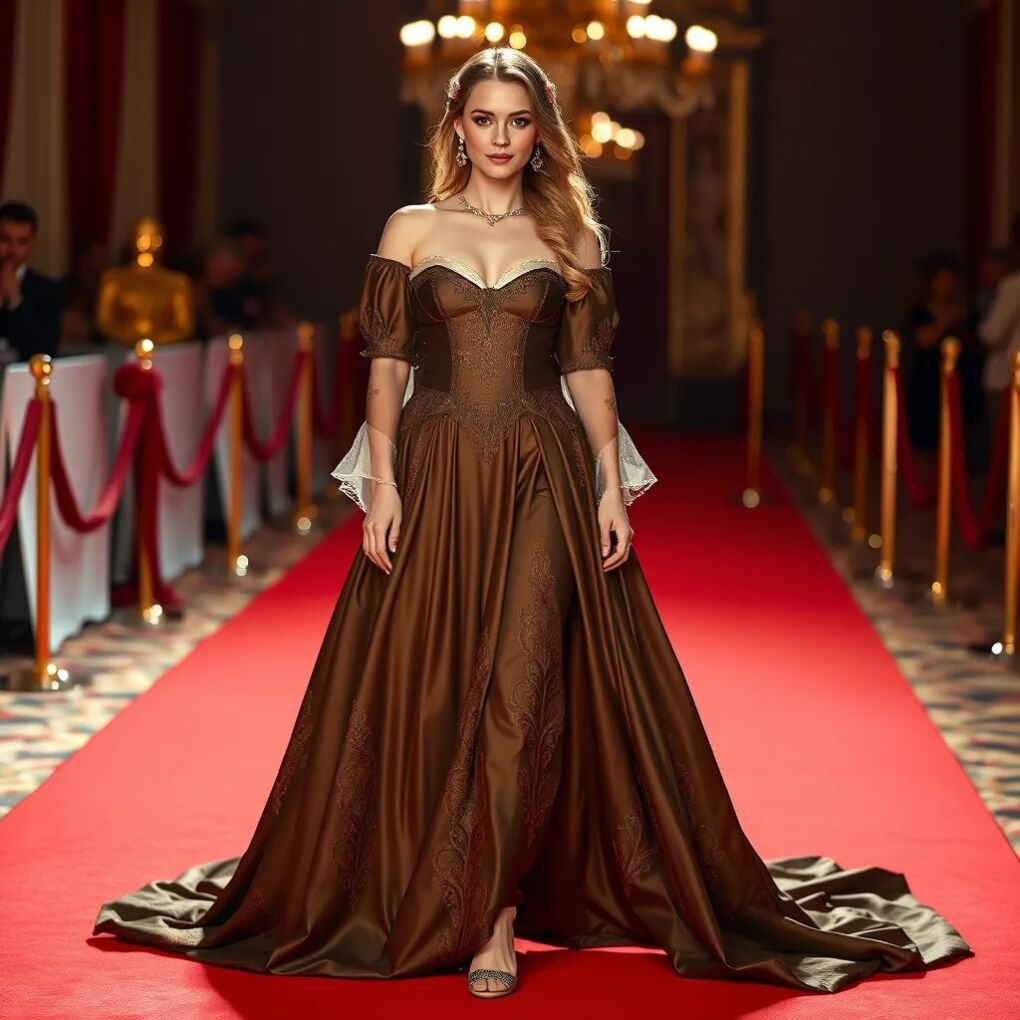
1. The Classic Queen Elizabeth I Gown
No Tudor-inspired wardrobe is complete without a nod to the iconic Queen Elizabeth I. Her regal gowns were the epitome of Tudor fashion, featuring rich fabrics, intricate embroidery, and lavish jewels.
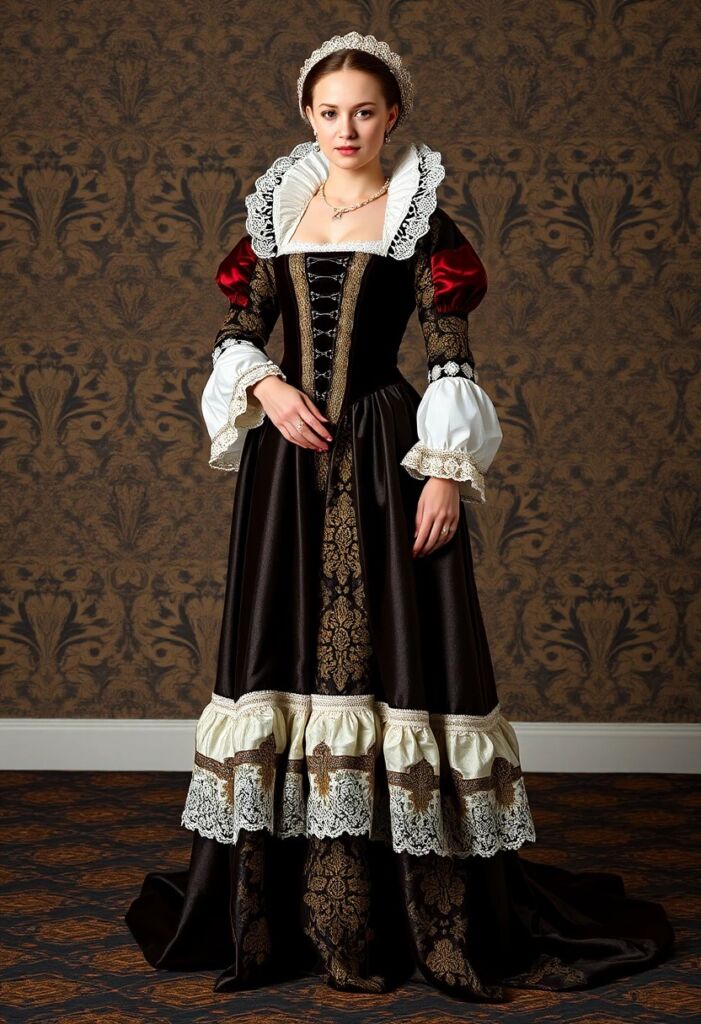
To recreate this look, opt for a fitted bodice with a low, square neckline and a full skirt adorned with elaborate patterns. Choose luxurious fabrics like velvet or brocade in deep jewel tones such as crimson, emerald, or royal purple. Don’t forget the iconic ruff collar and an ornate headdress to complete the regal ensemble.
“I know I have the body of a weak and feeble woman, but I have the heart and stomach of a king, and of a king of England too.” – Queen Elizabeth I
Pro Tip: To add authenticity to your Queen Elizabeth I costume, incorporate faux pearls and gemstones into your outfit. These can be sewn onto the dress or added as accessories.
2. The Dashing Henry VIII Ensemble
Channel the charismatic and controversial King Henry VIII with a bold and masculine Tudor outfit. This look is perfect for those who want to make a powerful statement at any costume event.
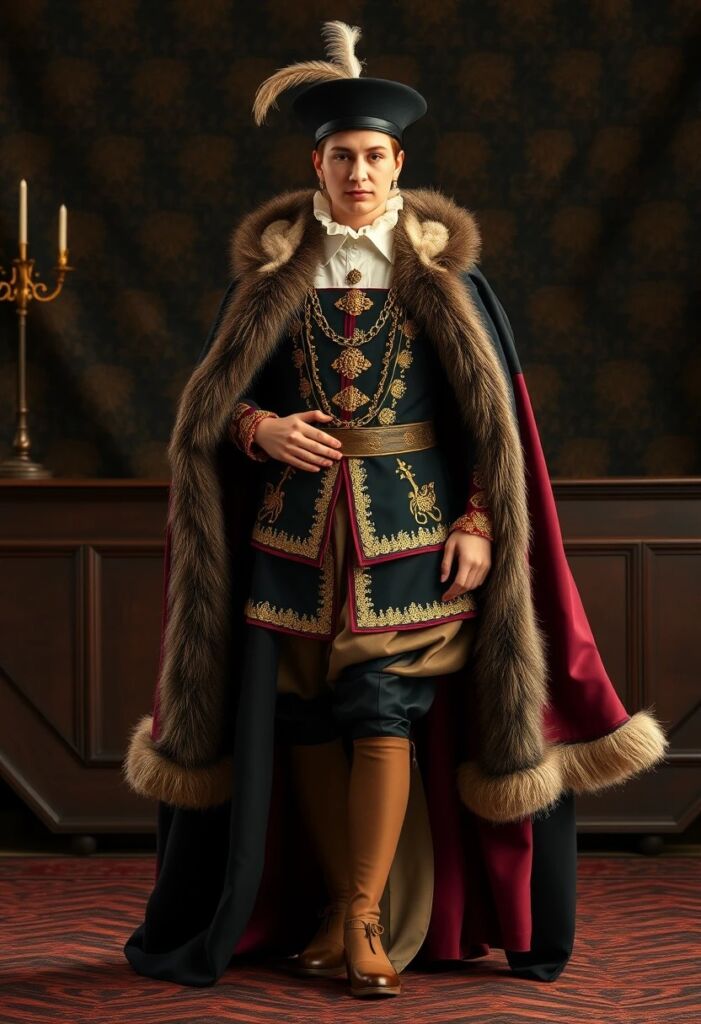
Key elements of a Henry VIII costume include a doublet (a fitted jacket) made of rich fabric, often adorned with gold embroidery or jewels. Pair this with voluminous breeches, known as trunk hose, and finish the look with a fur-trimmed cloak. Don’t forget the iconic flat cap adorned with a feather or jewel.
3. The Anne Boleyn-Inspired Gown
Anne Boleyn, the second wife of Henry VIII, was known for her sophisticated and fashionable taste. Her style influence can still be seen in modern interpretations of Tudor fashion.
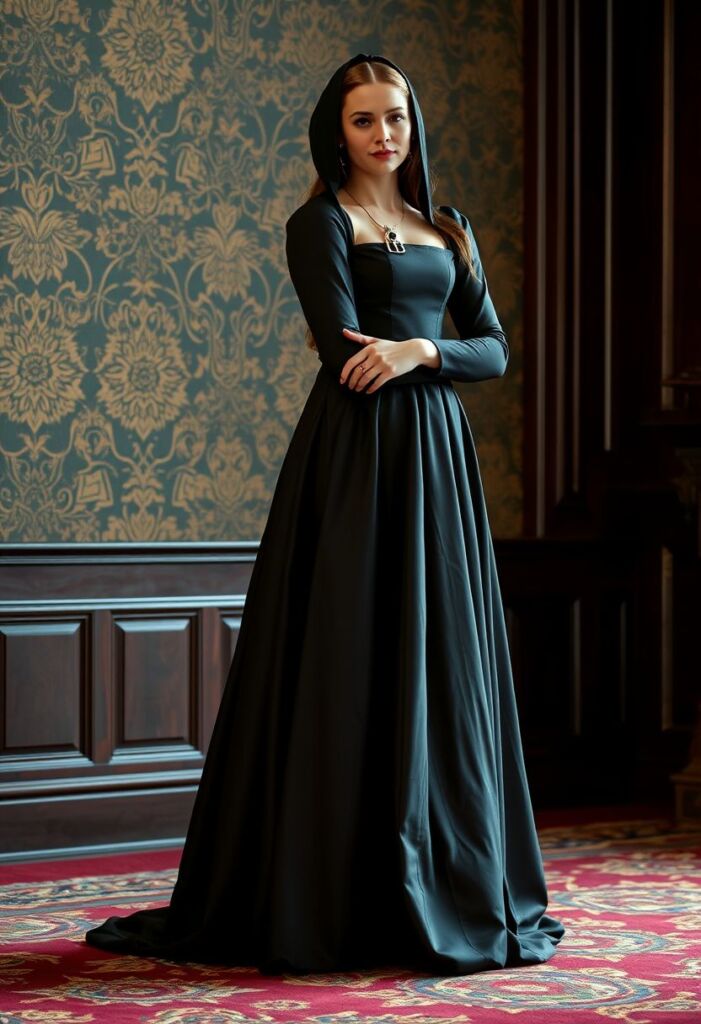
For an Anne Boleyn-inspired look, choose a gown with a square neckline and fitted bodice that flares out into a full skirt. French hoods, a popular headdress of the time, were often associated with Anne Boleyn. Opt for rich, dark colours like black or deep green, and accessorize with a signature “B” necklace as a nod to the historical figure.
4. The Tudor Merchant’s Wife Attire
Not all Tudor fashion was reserved for royalty. The merchant class also had their own distinctive style, which can be both elegant and practical for modern costume enthusiasts.
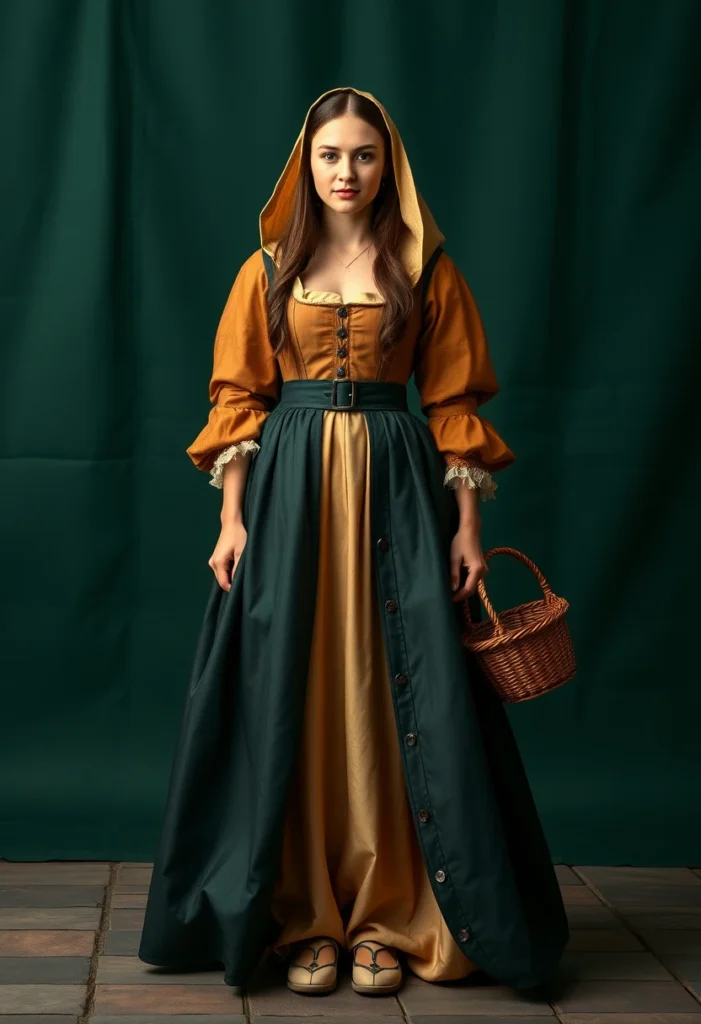
A merchant’s wife’s outfit typically consists of a chemise (undergarment), a kirtle (a supportive underdress), and a gown. Choose earthy tones like browns, greens, or muted blues. Accessories like a cloth belt, a simple coif (head covering), and a basket or pouch can add authenticity to the costume.
5. The Young Tudor Prince Outfit
For a charming and youthful Tudor look, consider dressing as a young prince. This outfit is perfect for boys or men who want a more playful take on Tudor fashion.
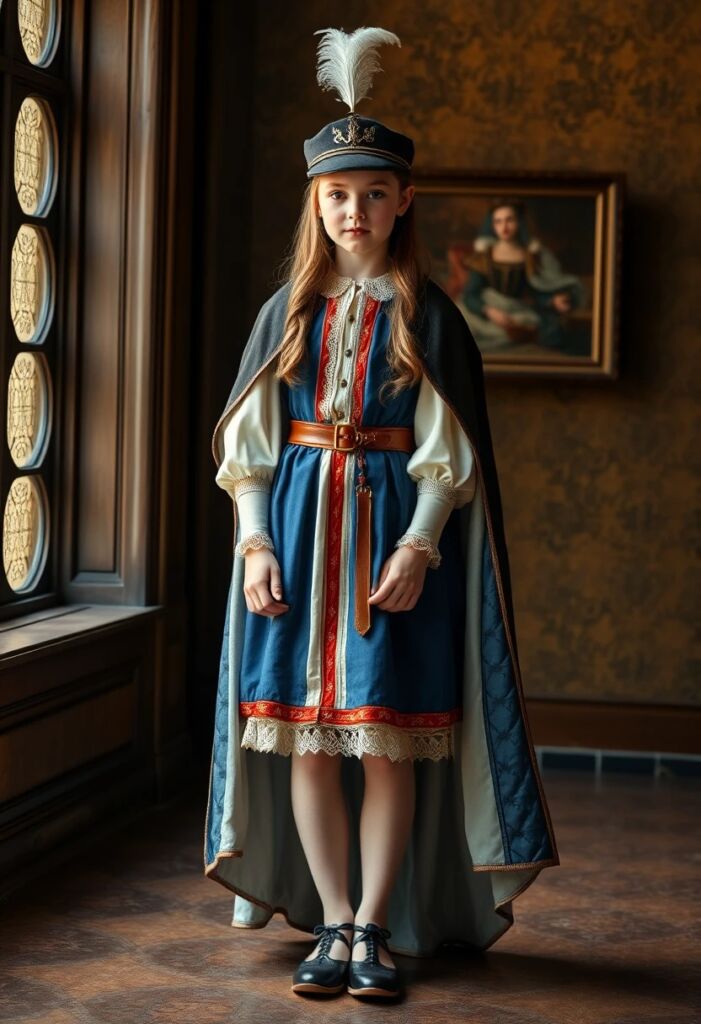
Key elements include a short doublet, often in bright colours or patterns, paired with puffed sleeves and trunk hose. Add a small cape and a jaunty cap with a feather for extra flair. This look can be both cute and regal, making it a versatile choice for various events.
6. The Tudor Lady-in-Waiting Dress
Ladies-in-waiting were noblewomen who attended to queens and princesses. Their outfits were elegant but slightly less ornate than those of royalty, making them a great choice for a more subtle Tudor-inspired look.
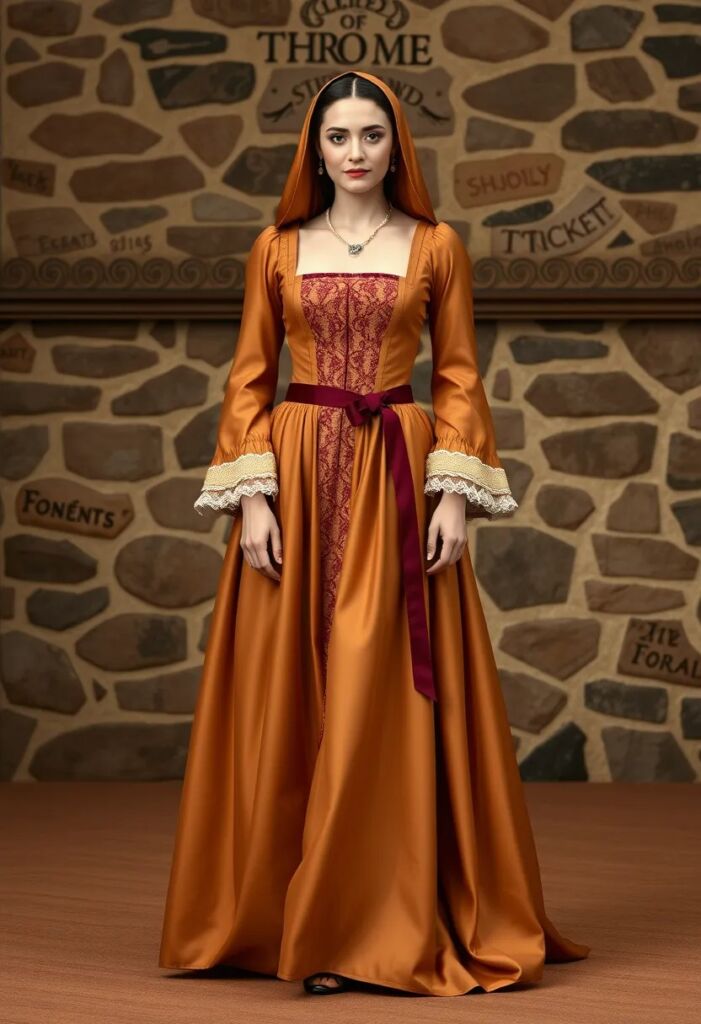
Opt for a gown with a square neckline and trumpet sleeves. The dress should have a fitted bodice and a full skirt but with less elaborate embroidery than a queen’s gown. Choose rich, solid colours and accessorize with a simple necklace and a French hood or gable hood.
7. The Tudor Courtier’s Finery
Male courtiers in the Tudor era were known for their flamboyant and colourful attire. This look is perfect for those who want to stand out at a Renaissance fair or Tudor-themed event.
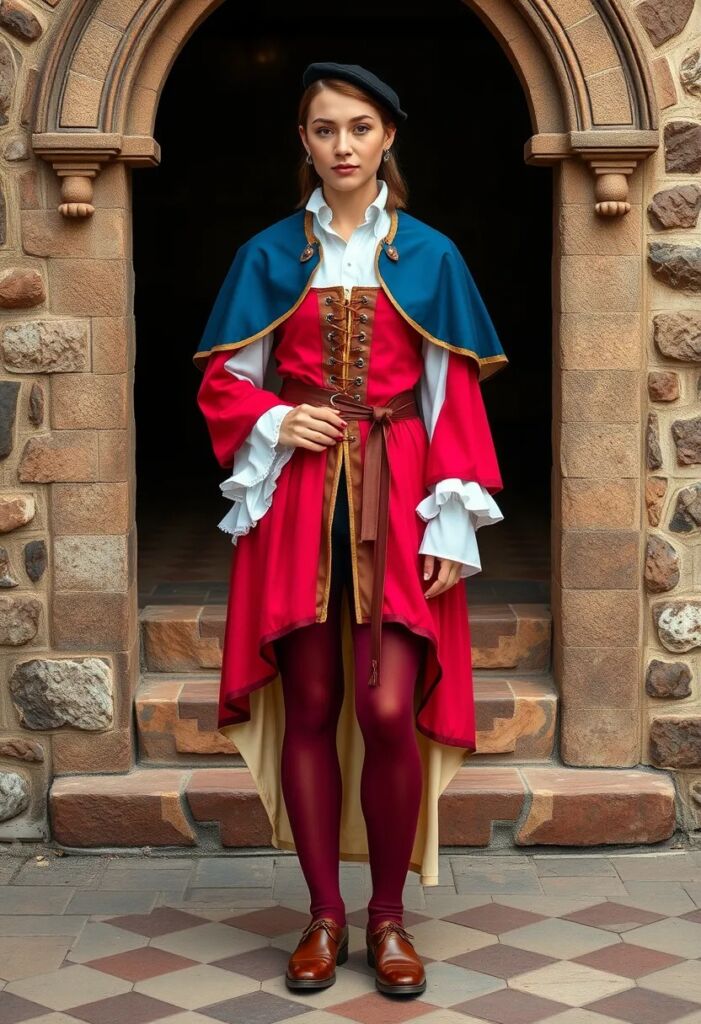
Key elements include a brightly coloured doublet with slashed sleeves, allowing the white shirt underneath to show through. Pair this with a trunk hose, tight-fitting stockings, and leather shoes with square toes. Add a short cape and a flat cap to complete the ensemble.
Pro Tip: To add an extra layer of authenticity, consider incorporating codpieces into male Tudor costumes. While they may seem unusual today, they were a standard part of men’s fashion during this era.
8. The Tudor Country Maid Costume
For a more rustic and practical Tudor look, consider dressing as a country maid. This costume is comfortable, easy to put together, and perfect for those who prefer a less formal appearance.

A typical country maid outfit consists of a simple linen chemise, a kirtle, and an apron. Choose natural, muted colours like beige, brown, or faded blue. Add a coif or straw hat to cover the hair, and consider carrying a basket or other props associated with rural life.
9. The Elaborate Tudor Wedding Gown
Tudor weddings were lavish affairs, and the bridal gowns were no exception. For a show-stopping Tudor-inspired look, consider recreating a wedding gown from this era.
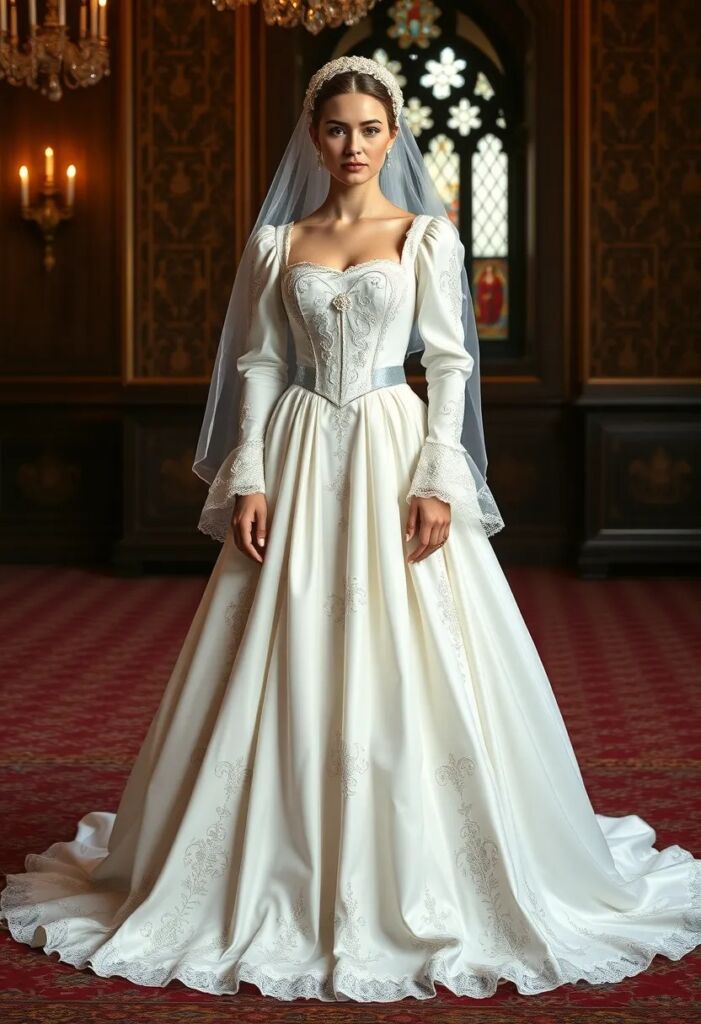
Choose a gown in white or silver, which were popular colours for Tudor brides. The dress should have a fitted bodice with a low, square neckline and a full skirt. Elaborate embroidery, often featuring floral motifs or religious symbols, was common. Don’t forget the long, flowing sleeves and a matching headdress or veil.
10. The Tudor Scholar’s Robes
For a more intellectual take on Tudor fashion, consider dressing as a scholar or academic from the era. This look is perfect for those who want a dignified and learned appearance.
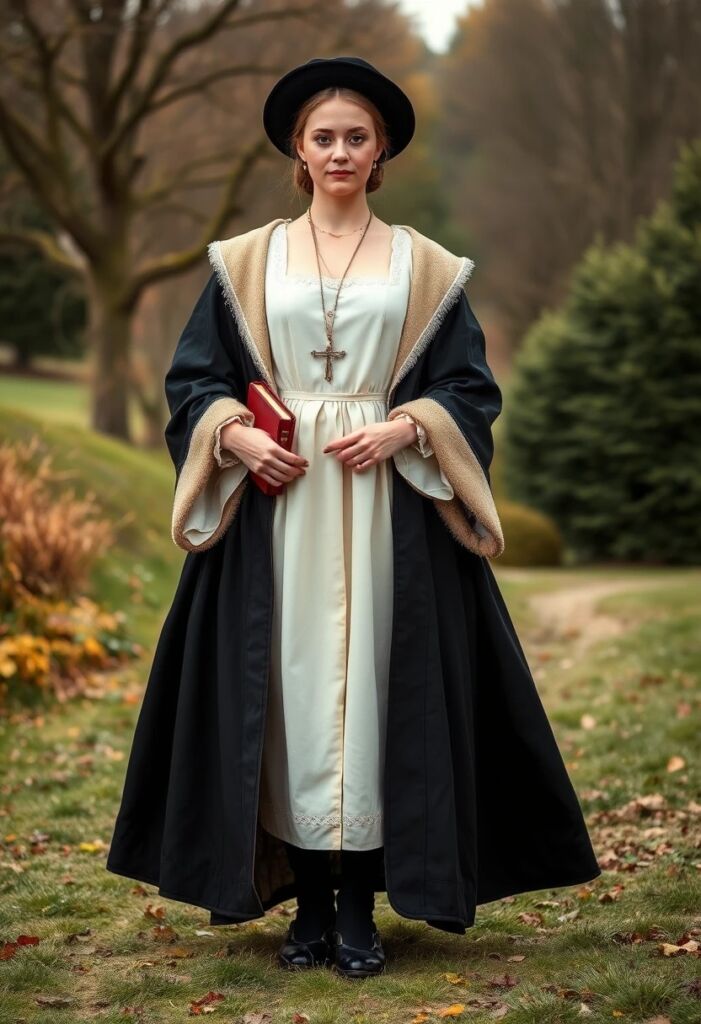
Key elements include long, flowing robes in dark colours like black, dark blue, or deep red. These were often worn over a simple tunic and hose. Add a flat academic cap, known as a Tudor bonnet, and consider carrying prop books or scrolls to complete the scholarly look.
11. The Tudor Jester’s Motley
For a playful and colourful Tudor-inspired costume, look no further than the court jester. These entertainers were known for their vibrant and mismatched outfits, designed to catch the eye and amuse the court.
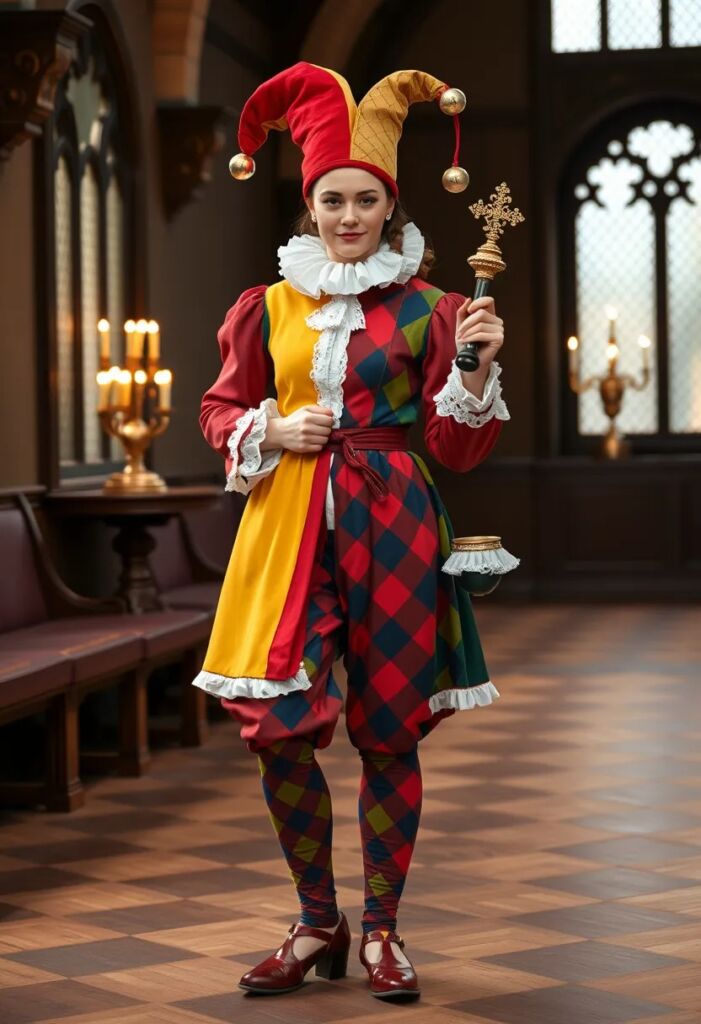
A jester’s costume typically features a tunic and breeches in contrasting colours and patterns. Look for fabrics with diamond or checkered patterns in bright hues. Don’t forget the iconic jester’s hat with bells, and consider adding props like a sceptre or puppet.
12. The Tudor Huntsman’s Attire
For a more rugged and outdoorsy Tudor look, consider dressing as a huntsman. This costume combines practicality with a period-appropriate style.
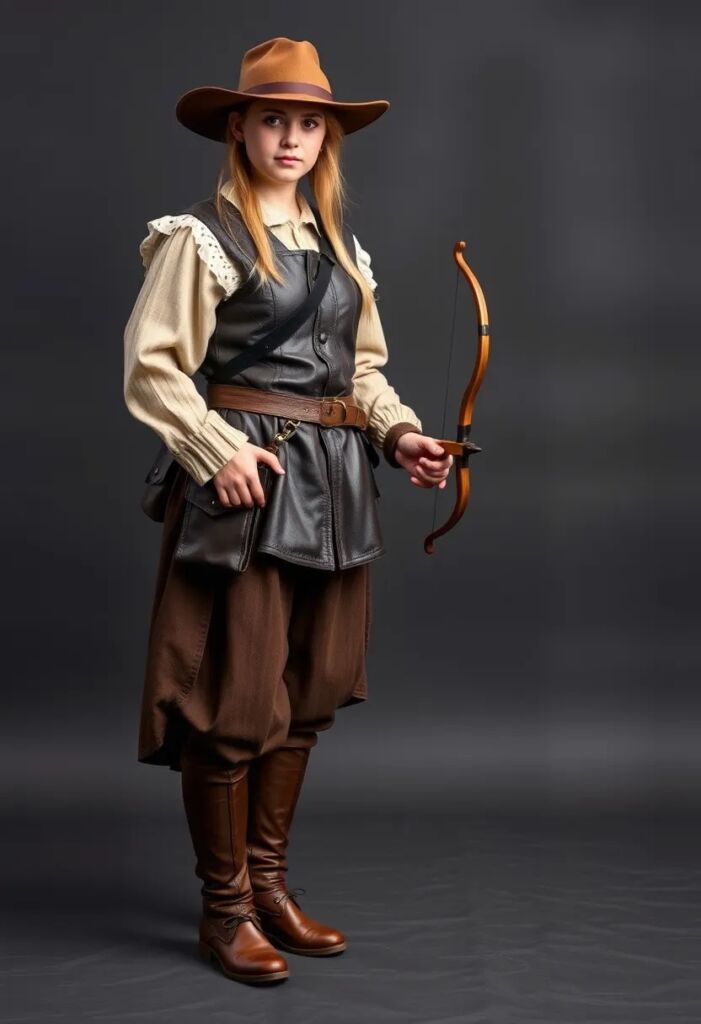
Key elements include a sturdy leather jerkin worn over a linen shirt, paired with woollen breeches and high boots. Add a wide-brimmed hat and a belt with pouches for an authentic touch. Props like a toy bow and arrow or a hunting horn can enhance the costume.
13. The Tudor Nun’s Habit
For a more sombre and spiritual Tudor-inspired look, consider the attire of a nun from this period. This costume is elegant in its simplicity and can be a unique choice for historical reenactments.
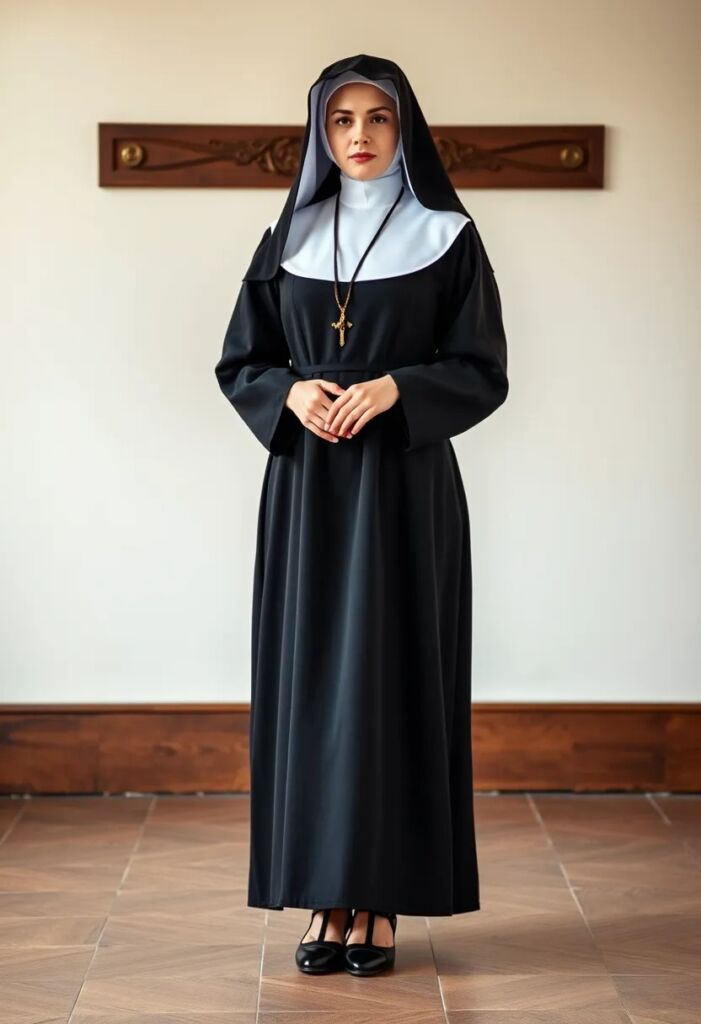
A Tudor nun’s habit typically consists of a long black gown with wide sleeves, worn over a white undergarment. Add a white coif to cover the hair and a black veil over it. A rosary and a cross pendant can serve as appropriate accessories.
14. The Tudor Nobleman’s Hunting Outfit
Combine luxury with practicality in a nobleman’s hunting attire. This outfit showcases the elegance of Tudor fashion while being suitable for outdoor activities.
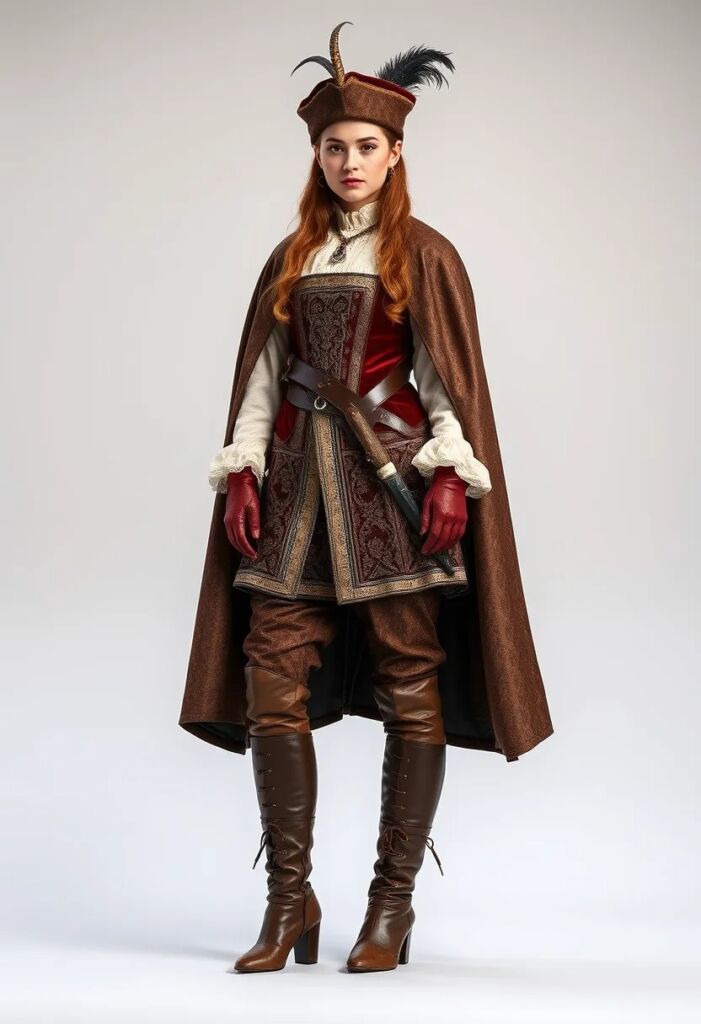
Choose a short doublet in rich fabrics like velvet or brocade, paired with comfortable breeches and high boots. Add a cape for warmth and style. Accessories might include leather gloves, a hunting knife, and a feathered cap.
15. The Tudor Minstrel’s Costume
Bring music to your Tudor-inspired look with a minstrel’s costume. This outfit is perfect for those who want to incorporate a musical theme into their historical attire.
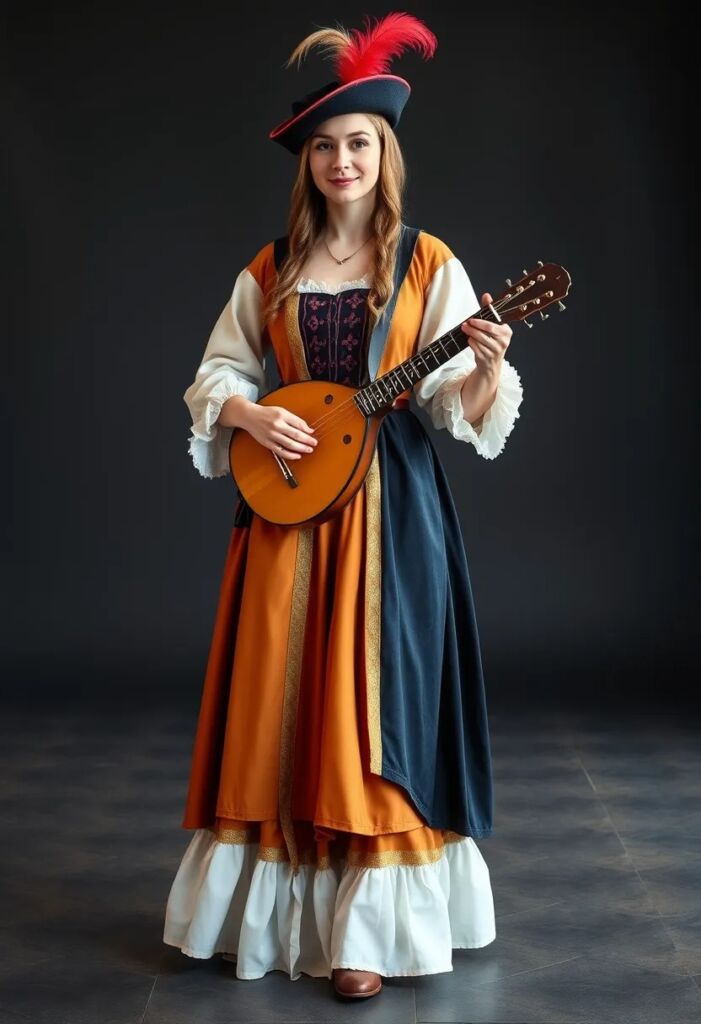
Opt for colourful, mismatched pieces that allow for easy movement. A loose-fitting tunic over tights or breeches works well. Add a jaunty cap with a feather and, of course, a musical instrument like a lute or recorder as a prop.
16. The Tudor Alchemist’s Robes
For a mysterious and intriguing Tudor-inspired look, consider dressing as an alchemist. This costume combines elements of scholarly and mystical attire.
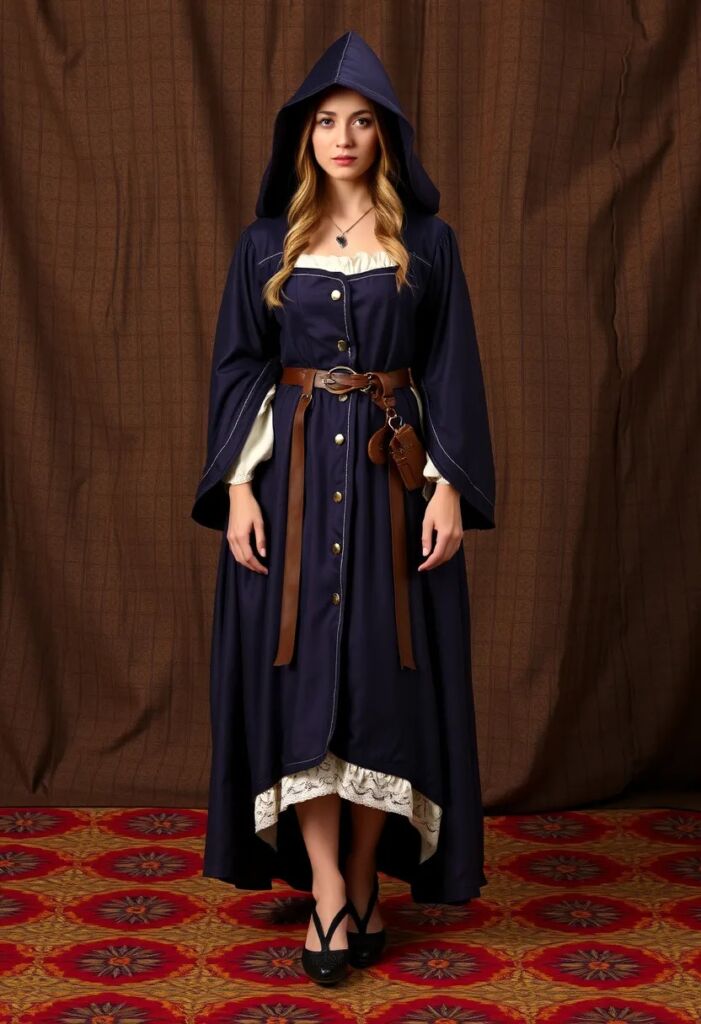
Choose long, flowing robes in dark colours like deep purple or midnight blue. Add a hood or a pointed hat for an air of mystery. Accessories might include a belt with pouches for “magical” ingredients and props like vials or an astrolabe that can enhance the alchemical theme.
Accessorizing Your Tudor Outfit
No Tudor costume is complete without the right accessories. Here’s a quick guide to some essential Tudor accessories:
- Headwear: Coifs, hoods, and caps
- Jewellery: Chunky necklaces, brooches, and rings
- Belts: Wide leather belts with decorative buckles
- Footwear: Square-toed shoes or boots
- Gloves: Embroidered or plain, depending on the outfit
- Fans: Folding fans for ladies’ costumes
- Handkerchiefs: Embroidered for nobles, plain for lower classes
Fabric Choices for Tudor Costumes
Selecting the right fabrics can make your Tudor costume look more authentic. Here’s a table of common Tudor fabrics and their modern equivalents:
| Tudor Fabric | Modern Equivalent | Best Used For |
|---|---|---|
| Velvet | Velvet or Velveteen | Nobles’ gowns, doublets |
| Silk | Silk or Satin | Fine gowns, shirts |
| Wool | Wool or Wool Blend | Cloaks, commoners’ clothing |
| Linen | Linen or Cotton | Undergarments, common clothing |
| Brocade | Brocade or Jacquard | Elaborate gowns, doublets |
| Leather | Leather or Faux Leather | Jerkins, belts, shoes |
Pro Tip: When choosing fabrics for your Tudor costume, consider the social status of the character you’re portraying. Higher-quality fabrics and brighter colours were typically reserved for the upper classes.
Where to Find Tudor Costume Inspiration
If you’re looking for more ideas and inspiration for your Tudor costume, consider these resources:
- Historical dramas like “The Tudors” or “Wolf Hall”
- Renaissance fairs and historical reenactments
- Museums with Tudor-era clothing exhibits
- Historical costume books and websites
- Pinterest boards dedicated to Tudor fashion
- Costume design sketches from theatre productions
Remember, while historical accuracy is important, don’t be afraid to add your own creative twist to your Tudor-inspired outfit. The key is to capture the essence of the era while expressing your personal style.
Conclusion
In conclusion, Tudor fashion offers a rich tapestry of styles to choose from, whether you’re aiming for regal elegance, scholarly dignity, or rustic charm. By mixing and matching elements from these 16 outfit ideas, you can create a unique Tudor-inspired look that’s sure to impress at any costume event. So, channel your inner Tudor and prepare to step back in time with these stunning outfit ideas!
